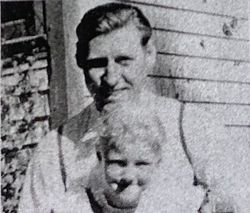In a previous blog on “Mollie” Mary Walsh on October 28, 2009, I mentioned that when Mike Bartlett, her husband, shot Mollie at 611 Pike Street in Seattle on October 27, 1902, he then tried to committed suicide. “The newspapers billed it as the trial of the century. The trial began in November of 1903 and concluded Dec. 2 of the same year. Mike was acquitted based on insanity. He spent two years in a mental facility and was released. Six months later, he killed himself.”
This left their 17-month old baby, Leo Bartlett an orphan. He may have gone to the Seattle Children’s home built in 1885, seen above.
Leo was born on March 18, 1901, according to the Juneau Empire story:
“Mollie delivered her son 73 miles above Rampart while the boat was taking on wood from a large wood pile on the Yukon River. Mike spent the last of their money on a drunken party soon after the birth. After the party, Mike, in a drunken haze, told Mollie that the people on board had named their son Leon Edward Seattle No. 3 Yukon Woodpile Bartlett. This news ended their marriage.”
Leo kept his name, at least the Leo Bartlett part, and was a veteran of World War I. He lived in Hot Springs Arkansas in the 1940’s but died in the Old Soldier’s home in Washington D.C. in the 1950s. Here is the Memorial number on the Washington D.C. Findagrave site: 21920233
Washington State death records online. Juneau Empire Nov 14, 2010.







